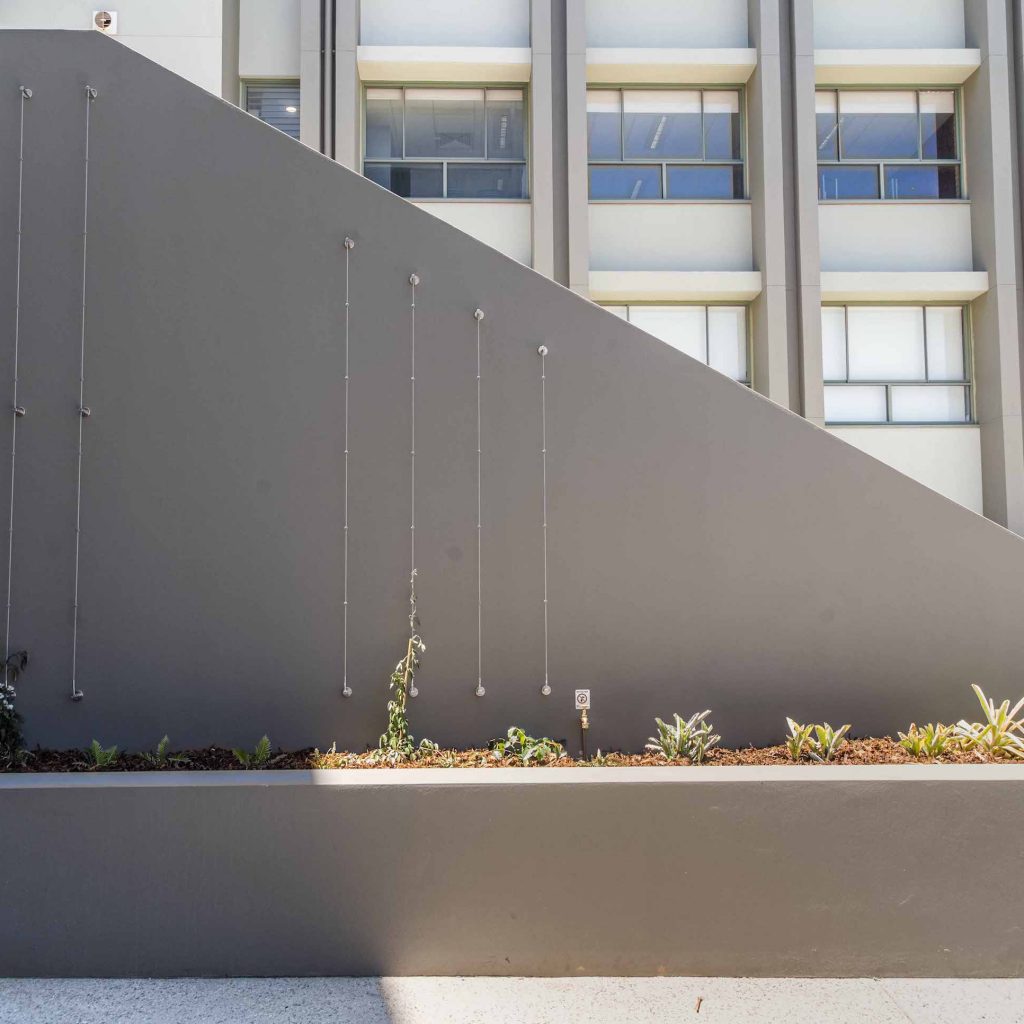Retaining walls are essential structures to both residential and commercial properties. A variety of materials and designs can be used when building a retaining wall. Ultimately, it comes down to the soil, location and level of reinforcement needed. Continue reading to learn more about the types of retaining walls and which option is best for your project.
Materials
Before getting into the types of retaining walls, it’s good to understand the different materials often used to build them.
Using concrete blocks for a retaining wall guarantees a sturdy and long-lasting design, as well as easy assembly. As they are artificially produced, concrete offers some flexibility in design and shape. For instance, with concrete, you can easily create a curved or straight wall.
Poured concrete is an alternative to a concrete block retaining wall. Because the concrete is poured into formation and it is more dense than a block, it is much stronger and more flexible in design.
Brick retaining walls offer a warm and homely look to a home or property. Similar to concrete blocks, bricks are low maintenance and durable, and are also resistant to the elements. The choice is up to you to have a natural retaining wall, or to have your brick wall rendered.
Stone looks beautiful, is timeless, and requires little to no maintenance. Natural stone can vary in sizes and textures, giving you the freedom to experiment with the assembly and design of your retaining wall. Like all other types of retaining walls, stone is a very sturdy and strong option that will last a very long time.
Types of Retaining Walls
Gravity Walls
There are various types of retaining walls used in both residential and commercial construction. A popular choice is the Gravity Wall. This retaining wall relies on its own weight to hold the soil behind it and is typically constructed using heavy materials such as stone and concrete blocks. It will usually have a thicker base and a slight backwards lean. Gravity walls are a popular option for residential properties with a hill or limited space.
Anchored Walls
These vertical retaining walls are ‘anchored’ into the ground behind the wall, usually by strong steel cables. The ends are then filled with concrete to secure the anchor. These types of retaining walls are used when either the space is limited, or a thin wall is required. They are also often used when higher loads are expected.
Cantilever Walls
Cantilever retaining walls are used to hold back large amounts of soil, and are generally made from a thin stem of steel-reinforced concrete, and a base slab. The base is slab is divided into two parts, the heel and the toe, making the shape of an inverted T. The heel is the base under the backfill. Although constructed in a very similar way to Gravity walls, Cantilever walls use significantly less material. This type of wall is generally favoured in commercial projects for its strength.
Gabion Walls
If you’re looking for a solution to either stabilise a slope or contain erosion, then this is the retaining wall for your project. Gabion retaining walls consist of mesh boxes filled with rocks or stones. These wire boxes are held together with steel wiring. These types of retaining walls can be used in either commercial or residential projects. They are long lasting, prevent soil erosion, they drain well, and they can be used in a range of applications, from garden beds to erosion control for major infrastructure.
What Retaining Wall is Best For Your Project?
Ultimately, the types of retaining walls you choose to use on your project depends on the problems that need to be solved, the type of soil that needs to be retained, the space available and the look you would like to use. Our team at Solutions Built can help you choose the best retaining wall option for your project. Speak to our team to find out how we can help construct your retaining wall.
